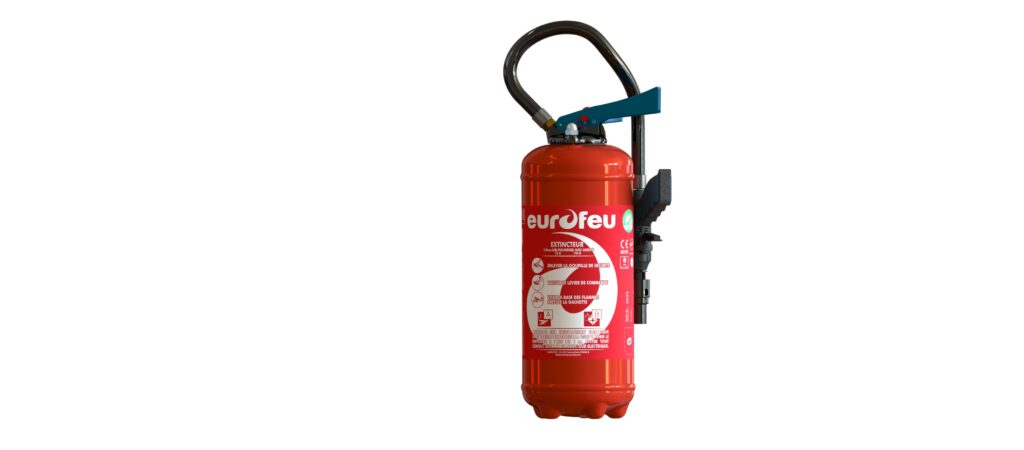What happens during a fire extinguisher training course?
Training in the use of fire extinguishers is an essential step in ensuring safety in the event of a fire. It usually lasts half a day and consists of a theoretical and a practical part. Participants learn how to quickly identify the different classes of fire, and how to use the various types of extinguisher appropriately. Refresher training is also provided to keep these crucial skills up to date.
Understanding fire extinguisher training
Fire extinguisher training is designed to equip participants with the skills they need to react to an outbreak of fire. It includes practical exercises with real or simulated extinguishers. These exercises enable trainees to practice extinguishing a fire in a controlled environment, boosting their confidence and efficiency.
Training generally takes place on the company's premises, to suit the specific requirements of the site. Experienced instructors supervise the participants while ensuring that safety instructions are followed. Learning the right gestures is essential to guarantee employee safety and limit material damage in the event of fire.
A personalized approach is often preferred, especially when the company presents specific risks. To optimize effectiveness, we recommend regular renewal of this training.
The course
The theoretical part
The theoretical part of the fire extinguisher training course provides an in-depth understanding of key fire safety concepts. Participants learn about the elements making up the fire triangle: fuel, oxidizer and activation energy. This knowledge is essential for identifying appropriate extinguishing methods.
Next, different classes of fire are discussed, each requiring a specific extinguishing agent. These include water, carbon dioxide (CO2) and chemical powders. Understanding their correct use is crucial to ensuring an effective response.
Participants also learn to recognize the warning signs of a fire. They become familiar with warning procedures and instructions for safe evacuation. Finally, they learn how to minimize the risk of fire starting.
The practical part: handling and use
During the practical part, participants apply the theoretical knowledge they have acquired. They learn to handle different types of extinguisher, such as water or CO2, in the face of simulated fires. The aim is to get used to the gesture and the grip of the extinguisher, so as to be able to intervene quickly and effectively.
A typical exercise involves removing the pin, directing the extinguisher jet at the base of the flames and maintaining a safe distance. Each step is carried out under the supervision of an experienced trainer, ensuring everyone's safety.
This hands-on practice is crucial to building employee confidence. Thanks to these exercises, they are better prepared to react appropriately in the event of a real fire. The emphasis is on speed and precision in controlling a fire before it spreads.
The importance of in-house training
Legal obligation
In France, employers are required by law to train their employees in the use of fire extinguishers, in accordance with article R. 4227-28 of the Labor Code. This obligation applies in particular to companies with over 50 employees or handling flammable materials. Employers must ensure that each employee has the necessary skills to intervene rapidly in the event of a fire.
This training is designed to ensure that staff are prepared to use extinguishers effectively when needed. It includes recognizing alarm signals and understanding safety instructions. Training sessions should be repeated regularly to maintain a high level of preparedness.
Businesses open to the public must also comply with this legislation, ensuring the safety of visitors and employees in the event of a fire.
Benefits for the company
Integrating fire extinguisher training into the company has many advantages. It improves overall safety by preparing staff to deal with a fire, helping to minimize material damage and protect human lives. Training also builds employee confidence, enabling them to handle emergency situations with assurance.
It also reinforces the company's image by demonstrating a commitment to health and safety in the workplace. In the event of an incident, rapid and effective intervention by trained employees can avoid significant financial losses. Notable benefits include
- Lower insurance premiums thanks to effective prevention measures
- Fewer business interruptions due to incidents
- Enhancing the company's image in the eyes of partners and customers, reinforcing trust and loyalty.
The different types of fire extinguisher training
Initial training
Initial fire extinguisher training is designed to equip participants with essential fire safety skills. It combines theory and practice to ensure complete understanding.
Participants learn to identify the different types of extinguishers and their appropriate use for different classes of fire. Emphasis is placed on the crucial steps to follow when responding to a fire:
- Quickly locate the nearest extinguisher
- Remove safety pin
- Direct the jet at the base of the flames
An experienced trainer guides each session to ensure safe handling. A practical exercise on a simulated fire helps to familiarize participants with the gestures involved. This immersive experience builds confidence and rapid response, preparing employees to react effectively to a fire.
Refresher courses and further training
Refresher fire extinguisher training is essential to keep employees' skills up to date. In general, a refresher course is recommended every two years, although some companies opt for an annual rhythm. This ongoing training is crucial for reinforcing reflexes in the event of fire.
The refresher sessions focus on several key aspects:
- Practical experience on real fires using appropriate extinguishers
- Review of evacuation procedures and safety instructions
- Exercises to improve intervention speed and precision
Regular participation in these training courses ensures that staff are ready to react safely and effectively to any fire outbreak. A concrete example of this effectiveness is the increased ability to quickly identify the type of fire and choose the appropriate extinguisher to put it out.
Fire extinguisher training regulations
Training frequency
It is recommended that all employees receive initial fire extinguisher training as soon as they are hired. As a general rule, this training should be repeated every two years to ensure that everyone masters the gestures required in the event of a fire.
Some companies opt for annual sessions, especially if they handle flammable materials or are open to the public.
The importance of maintaining this rate of renewal is crucial to ensuring that staff remain alert and competent.
Here are some key points to consider:
- Optimum frequency: every 1 to 2 years
- Specific requirements: depending on the company's type of activity
- Continuing training: adapting skills to new safety standards
These steps guarantee a high level of preparedness for potential emergency situations.
Criteria for valid training
For a fire extinguisher training course to be considered valid, several criteria must be met. Firstly, it must be given by a qualified trainer. The content of the training must include a theoretical part on types of fire and suitable extinguishers, followed by practical exercises on simulated fires.
Secondly, training must be renewed regularly to keep skills up to date. In general, it's recommended every two years, but some companies opt for an annual frequency, especially if they present particular risks, such as handling flammable materials.
Finally, training must be tailored to the company's specific needs, taking into account the risks identified in the Single Occupational Risk Assessment Document. Well-designed training ensures that staff are ready to intervene effectively in the event of an emergency.

Read our other articles here! :


